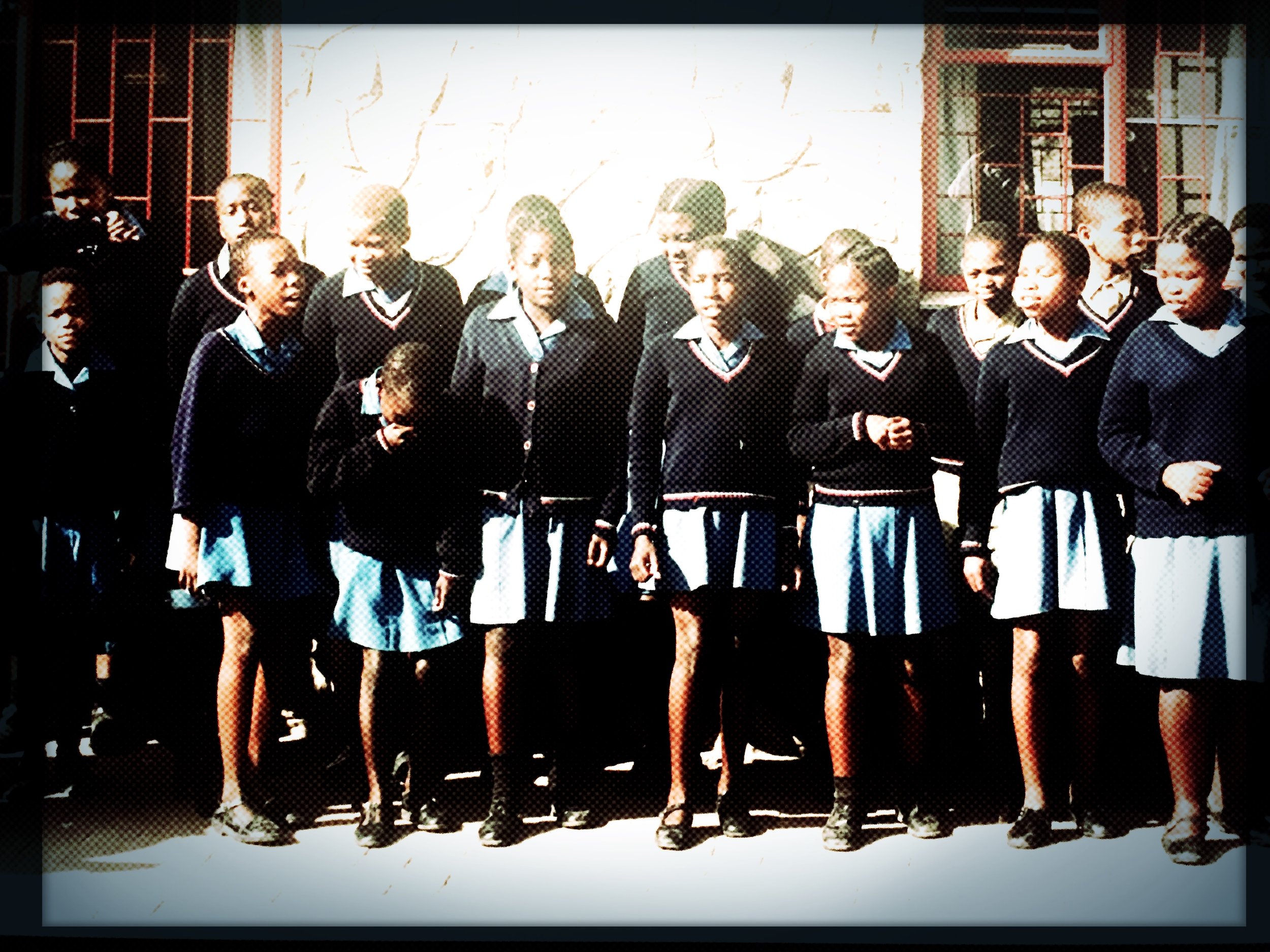Maseru, Lesotho — 1995
I was sitting in the back seat of the car. As I recall, the road was awash with gravel and the slow drive uphill made way for a cool breeze to filter through the open window. A sound began to emerge between the pops of gravel as we climbed higher. I couldn't make it out at first but clear, faint music was drifting through the atmosphere. My ear stretched to determine the source. Neither the radio nor my imagination were it. Around another bend, we climbed. Singing grew louder.
Trees and buildings parted to reveal dozens of children in the schoolyard. We drove in and eased out of the car so as not to disturb the magic before us. Their Sesotho song penetrated straight through my rib cage and into my heart. Their blue uniforms were container for such rhythm. A collective and synchronous dance functioned to expel their brilliant voices from their little bouncing bodies. Every face was dark like dusk. Every smile beamed brilliant. I must not have witnessed anything more beautiful in all my life because tears arose as if to purify my senses.
We had come to visit St Bernadette’s School for the visually impaired. Canonized in 1933, St. Bernadette became the patron saint of bodily illness. She teaches us to find healing, as well as to develop the ability to accept and endure suffering so that we may grow in spiritual awareness. My grandmother, Rosemary Boykin, was engaged in humanitarian work for the school and was eager to give a tour. How honored were we to find that the students had taken a short break from their learning to greet us.
Some of these children were born without sight. They knew little of what they lacked. Some children had seen before and somehow lost that part of their world. Images of mother, father and home remained only in their mind's eye. Some children had the support of a family and village to bring them to St. Bernadette’s school. Some had been orphaned and rescued. No matter the circumstance, these children made their way to protection, care and learning.
More than disabled, these children were healers. They healed themselves and they healed one another. They created and adopted new ways to manage in a seeing world. And, despite any challenge, they developed and expressed such innate gifts effortlessly. They were made stronger and closer by the ability to focus other senses. Alone or in choir, these children sang and danced as angels would.
Suffering pales and faith emerges. I hope that each of us might also find a way to heal ourselves, help heal one another and express our unique strengths, gifts and awareness for the illumination of community and globe. If in the face of disability, Great Spirit created this one joyous event. it can create many, many more.





